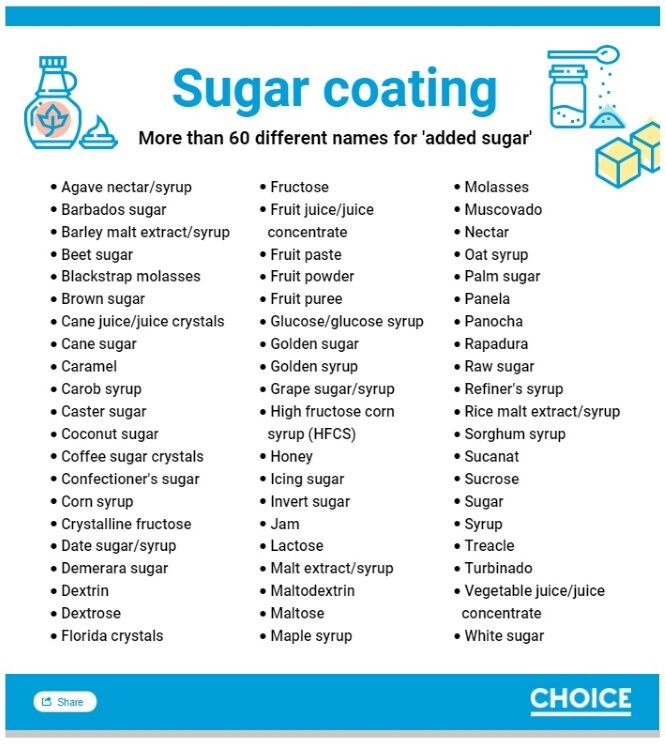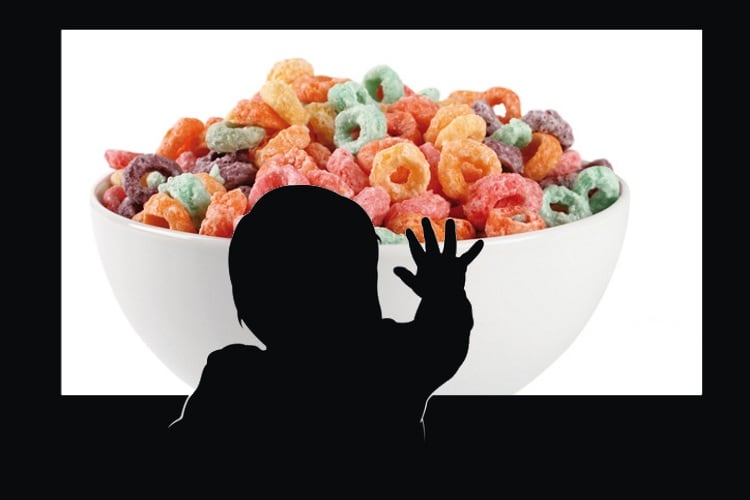Choice reviewed 78 packaged toddler snacks widely available on Australian supermarket shelves, and compared the pack’s imagery and product claims with the nutritional information and ingredients list.
The group has now rung a warning bell for parents after finding many of the products targeting young children contain an excessively high sugar content.
It found that sweet treats outnumbered savoury products by almost two to one, with 58% of those reviewed containing added sugars that are considered harmful to young children’s health.
Almost half (45%) could be classified as ‘high in sugar’ (with at least 15g of sugar per 100g), while the worst offenders contained more than 60% sugar. Here, the watchdog identified the biggest culprits as Rafferty’s Garden Yoghurt Buttons (more than 62% sugar) and Kiddylicious’ fruit snacks (between 63%-69% sugar).
Health risks
The advocacy group spoke to Jane Martin, executive manager of the Obesity Policy Coalition (OPC), about the effects of regularly consuming sugar.
“Regularly eating sugary foods puts children at risk of tooth decay and unhealthy weight gain. As they grow older this can lead to increased risk of diseases such as type-2 diabetes, heart disease and some cancers,” said Martin.
More insidious is the speed at which a child’s palate adjusts.
“Children can develop a preference for sweet foods, which can result in a diet high in sugar and missed opportunities for the child to develop a taste preference for healthier, unsweetened foods,” said Martin.
Misleading parents
Avoiding products with harmful sugars, however, is far from straightforward.
Choice’s food editor Rachel Clemons said marketing tricks are often employed to make these products appear healthier than they are.
“Many use pictures of healthy fruits or make statements like ‘made with real fruit’ to give a false sense of security to parents,” said Clemons.
While 54% of the snacks Choice reviewed featured wholesome images of fresh fruit and veg and claims like ‘made with real fruit’ and ‘locked in goodness’, the investigation found 14% actually contained a fruit concentrate, paste or puree to sweeten the product that bore “little resemblance to the whole fruit from which it’s derived”.
Kiddylicious Strawberry Fruit Wiggles, for example, are almost entirely made of fruit concentrates and purees, not whole strawberries as the image implies, said Choice.
According to Martin, fruit paste is made by boiling fruit to remove all its water, leaving behind little more than “a pile of sugar.
“The sugar that is coming from processed fruit is harmful the same way cane sugar is harmful,” she added.
"Manufacturers are misleading parents into thinking that these products are healthier than they are, when in fact they are often full of sugar and are packed with cheap sweeteners – shaping our children's preferences from a very early age.”
A rose is a rose is a rose…
Beyond sugar, Choice’s research also found many toddler snacks were highly processed and offered little in the way of nutritional value. While infant food sold in Australia is regulated for sodium content, there are no hard-and-fast regulations around sugar content in toddler foods.
Martin concurred that nutrition information panels list all sugars, but noted they do not differentiate naturally occurring sugars in foods from those that have been added by the manufacturer – and these can be very ambiguous.
According to Choice, added sugars are listed under more than 60 different names. Adding to the confusion is the fact that they aren’t always grouped together on the ingredients list, making them difficult to identify. Topping that is the total sugar listed doesn’t differentiate sugars that have been added by the manufacturer from those that are intrinsic to the ingredients.

For several years now, Choice has been lobbying for clearer food labelling so that consumers can make better informed decisions.
“The labelling of the food should accurately reflect ingredients and not confuse consumers,” Martin said.
“We want to see added sugars clearly defined to capture all sugars that are harmful to health, including highly processed fruit ingredients like pastes and concentrates which are often in products marketed as healthy, such as toddler foods.”
Alice Pryor, campaigns manager for Parents’ Voice, weighed in with her concerns, noting that parents of toddlers often struggle to find time in the supermarket to read and compare the small print on the back of these items.
"Parents want to give their children the best start to life, and these products lead parents to believe they are healthy and nutritional snacks and meals for their children when the reality is that many of them are actually laden with hidden salt and sugar," said Pryor.
Snacks for healthy development
Choice’s report fingered another strategy used by manufacturers – by appealing to parents’ desire to support the healthy development of their child. This is done at both brand level and product level, it claimed, for example:
‘Our snacking range has been developed to encourage your child to discover new tastes, textures, aromas and shapes’ - Cub
‘[We are] committed to making yummy, nourishing food for your family using real ingredients. No artificial stuff. No funny numbers. And no added junk’ – Whole Kids
‘Lovingly developed for your little one to ensure they receive a varied start to their food adventure. Exploring new textures, aromas and tastes is a vital part of your child's early development’ – Mamia
‘Perfect for little mouths’ – Rafferty’s Garden
‘The perfect size and shape for little hands to hold’ – Only Organic
How to be snack savvy
Despite the drive to differentiate the category, one viewpoint all the players shared was that special foods for this age group aren’t needed.
In fact, added Dr Rosemary Stanton, a public health nutritionist and visiting fellow at the University of New South Wales school of medical sciences, “Once you start having separate foods for toddlers, people start thinking they can’t have regular food.
“They’re totally unnecessary. The message is from 12 months onwards they should have family foods not special food.”
And although convenient, these products also tend to be more expensive and are bad value for their small size.
“We need to start young children on a healthier pattern of eating, so that they go to school with healthy eating habits, not thinking they need something that comes out of a packet,” said Dr Stanton.
Not wanting to merely stand on a soapbox, she offered some advice for parents of picky eaters.
She said both research and her own experiences suggest that one of the best ways to get children to eat fruit and veggies is to give them a role in growing them – be it at home, within a community or school garden, or even in pots on a balcony.
“Once they see things growing, they become far more interested in eating it,” said Dr Stanton.
“My best advice for parents of children going to preschool is to talk to the parents of your child’s friends and all agree you won’t put packets in their lunch, or agree to only do so one day a week.”





